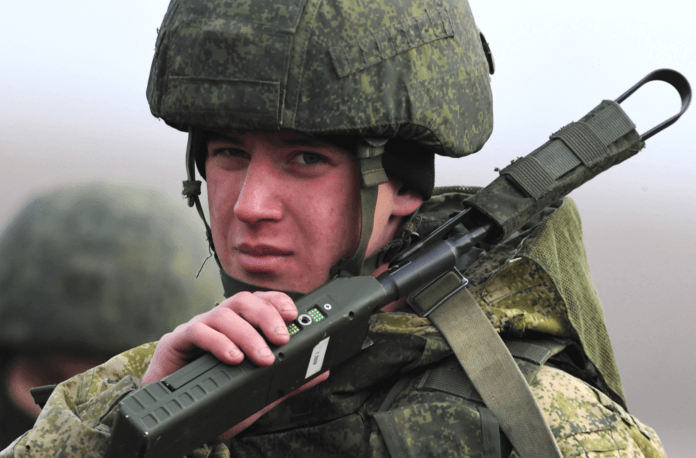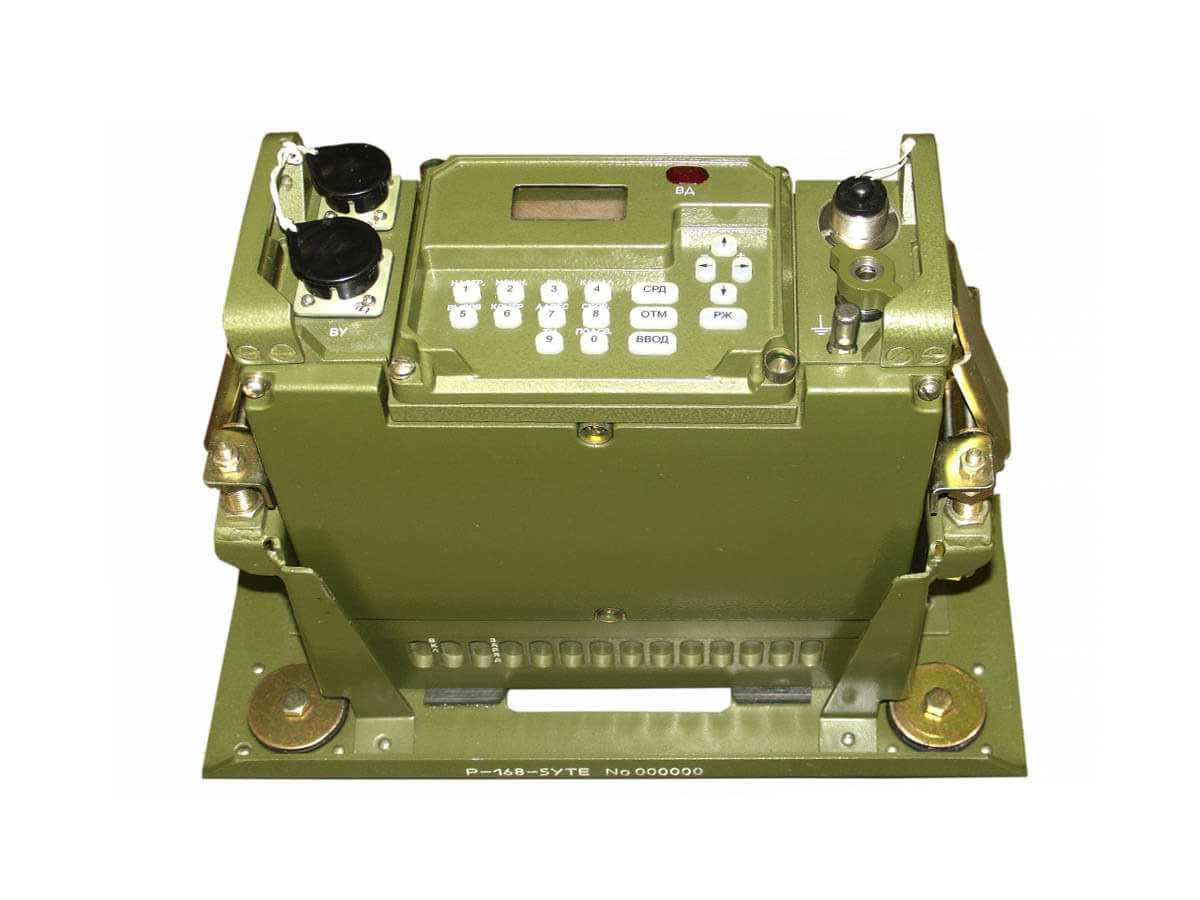The international edition “Armada International” published an article about russian communication systems used in the russian-Ukrainian war. It is based on data spreaded on the AOC 2023 conference, which took place in Bonn (Germany) from May 17 – 19.
The original text of the article you can find on the “Armada International” website.

More details come to light on how the Russian Army organises its tactical communications in the Ukrainian theatre of operations.
The 2023 Association of Old Crows’ Electronic Warfare Europe conference and exhibition yielded a plethora of fascinating presentations. Held in the western German city of Bonn between 15th and 17th May, it included an intriguing paper discussing Russian Army tactical communications in Ukraine. The paper was presented by Yaroslav Kalinin, chief executive officer of Infozahyst. Russian tactical communications has been a subject that has interested Armada since Moscow’s second invasion of Ukraine in February 2022. We examined Russian military communications in two recent articles, one this January, the other in April 2022. Publications by the Royal United Services Institute thinktank in London have also shed light on this subject.
Nonetheless, information on Russian military communications continues to flow out of the Ukrainian theatre of operations, all of which is valuable to North Atlantic Treaty Organisation (NATO) and allied nations. Should the unthinkable happen, and NATO be forced to fight Russian land forces, knowing how the latter’s communications work will be useful. That way, Russia’s military radio networks can be jammed, exploited for intelligence, flooded with erroneous information and used to determine the location of Russian units.
We know the Russian Army deploys the R-187P Azart series handheld radio which uses wavebands of 27 megahertz/MHz to 520MHz. Azart (Excitement) radios were deployed in Ukraine alongside the R-168 Akveduk (Aqueduct) multiband system. The R-168 provides high frequency (three megahertz to 30MHz) and Very/Ultra High Frequency (V/UHF: 30MHz to three gigahertz) communications. The latter radio is thought to be deployed with Russia’s airborne forces which are a separate service.
Excitement and Aqueducts
Russian documents seen by Armada state that Russian land forces’ Combined Arms Armies (CAAs) use the R-187BV V/UHF radio at the operational headquarters level. Similar radios are deployed at the division/brigade command level. Battalion commanders are equipped with the R-187BV. Meanwhile, handheld R-187P and R-187N radios are deployed at platoon and squad levels. It is possible that the R-187P is a multichannel system for commanders linking up to the battalion and downwards to squad commanders. The R-187N could be a single-channel/single-band radio used by squad soldiers. Infantry soldiers outfitted with the Ratnik soldier system may use the R-169 transceiver (39MHz – 45MHz/146MHz – 174MHz). However, the extent to which Russian forces rely on civilian standard handheld radios in Ukraine suggests the R-169 has not been widely deployed.
The R-187P and R-168 systems are comparatively new radios. They were procured to equip Russian land forces as part of the military modernisation launched by Moscow after the 2008 Russo-Georgian War. Nonetheless, they are not uniform across the Russian land manoeuvre force. Writ large, the army, and Russia’s airborne forces and naval infantry use a plethora of new and legacy radios.
Legacy transceivers used by Russian land forces in Ukraine include the Soviet-era R-123 Magnolia vehicular radio which uses frequencies of 21MHz to 75MHz. The R-123 is joined by the R-159 (30MHz – 76MHz) backpack transceiver. Newer systems include the R-175 vehicular system (30MHz – 76MHz) and R-392 Arakis (42MHz – 52MHz, 148MHz – 174MHz and 410MHz – 450MHz) backpack radio. The latter is used by Russia’s Border Guard Service and some of Russian militias in occupied parts of Ukraine.
This mix of radios appears to be causing significant problems. Ukrainian sources shared with Armada that these transceivers are essentially incompatible with each other. There is no common, secure waveform which legacy and new systems use to communicate between them. For example, the sources said that the Arakis and Aqueduct radios cannot communicate with each other. This shortcoming forces Russian units to communication en clair sans encryption. As a result, radio traffic is relatively easy to jam and exploit for intelligence.
The comparatively low frequency bands used by Russian land forces present some challenges to Ukraine communications intelligence experts as these can make the radios comparatively hard to locate. Ironically, the R-168 is being phased out in favour of the R-187. One of the R-168’s problems is that its development was not completed before it was deployed, the sources continued. It is used for Satellite Communications (SATCOM), but mainly confined to Russian forces in Ukraine’s southern Crimea and Kherson regions. Military SATCOM has been a key shortcoming for Russian forces. It was all but non-existent in the early days of Moscow’s second invasion. Ukrainian electronic warfare was particularly good at jamming Russian military SATCOM frequencies. As a result, Russian land forces relied on private sector Iridium and Thuraya SATCOM services during the early stages of the war.
The R-187 is arguably the most modern and capable tactical radio in the land forces inventory. The sources added that this radio receives regular software updates. It has good Frequency Hopping (FH) and mobile ad hoc networking functions, although its antenna does not work as well as it should. Fortunately, it is relatively straightforward to detect and locate as it performs a set 50 hops-per-second in FH mode. This makes the signal comparatively easy to identify. Anyone wishing to learn more about the P-187, how it operates and its potential vulnerabilities would do well to read this guide.
Planning
Communications planning has been another challenge for Russian land forces. The Ukrainian sources said that any communications plans have been implemented very poorly within the manoeuvre force. This failing may have been driven by two factors: First, the disparate array of radios used by the force will not have helped. Moreover, it appears that large-scale tactical/operational level exercises where all these radios are brought together have either been few and far between, or lessons learned have not been adopted, or both. Secondly, Ukrainian resistance was expected by Russia to crumble comparatively quickly. As a result, the plan may have struggled to transition to the attritional conflict in which Russia is now involved. Has the Russian military learned from its mistake? It appears not. “The house of cards is still falling,” said the source. “They will not change their mentality regarding the organisation and misuse of their communications.”

by Dr. Thomas Withington